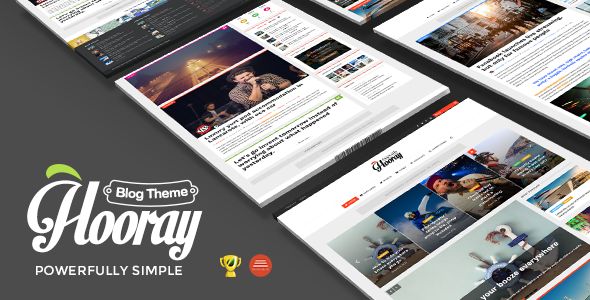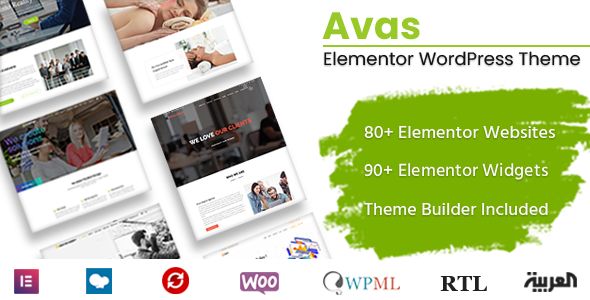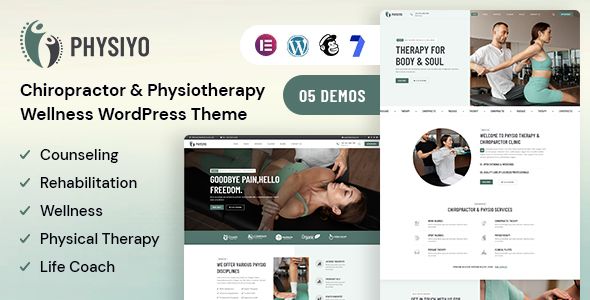Choose Your Desired Option(s)
×
- Description
- Reviews
- FAQ

Choosing the GPL-licensed edition of Ignavo – Auto Parts WooCommerce Theme is less about a label and more about how you actually run an automotive storefront. You get installation on unlimited sites, a one-time purchase model, and the complete feature set—with updates synced to official releases—so you can iterate on catalogs, spin up dealer microsites, test seasonal layouts, and migrate between hosts without license friction. In day-to-day operations this translates into faster launches, cleaner handoffs, and fewer blockers when you need a development or staging copy alongside production.
Below you’ll find a hands-on overview of what Ignavo does well for auto parts businesses, the store patterns that make conversions easier (especially on mobile), and the practical steps to set it up so search, filters, and compatibility details feel natural to shoppers who already know the part number—or only know their vehicle.
✅ Product Description
Ignavo – Auto Parts WooCommerce Theme is a purpose-built storefront system for automotive catalogs—OEM, aftermarket, performance, wheels and tires, fluids and chemicals, tools, and accessories. The core idea is simple: present large, often technical inventories with clear compatibility cues, fast filtering, and trust-building details (fitment, warranty, instructions, reviews) without sacrificing performance or a tidy buying flow.
The layouts combine crisp typography with high-contrast UI elements, spacious cards, and sensible placement of Add to Cart, Compatibility, and Shipping information. On mobile, the theme privileges the essentials: a sticky search, compact filter drawers, a readable price block, and painless quantity controls. On desktop, category pages scale to show more attributes, badges (e.g., “In Stock,” “Clearance,” “Popular”), and comparison toggles where you want them.
Because this is a GPL-licensed build, you can install Ignavo – Auto Parts WooCommerce Theme on unlimited domains—your main store, wholesale portal, regional sites, a B2B catalog that hides prices, or a temporary clearance microsite—and keep them all current with official-synced updates. That freedom is especially useful when you manage a large product graph and need to experiment with category grouping, attribute naming, or user flows without counting seats or juggling activations.
✅ Key Features (Built for Auto Parts, Not Generic Retail)
1) Vehicle-First Navigation
Auto parts shopping starts with the vehicle. Ignavo’s information architecture encourages Year / Make / Model (and trim/engine) entry points, destination links for popular vehicles, and “shop by category” shortcuts (brakes, suspension, filters, electrical, interior, exterior). You can mix and match these approaches so both “VIN-savvy” buyers and casual DIYers feel at home.
2) Fitment & Attributes That Stay Readable
Parts are technical; the UI shouldn’t be. Ignavo treats attributes (bolt pattern, offset, tire size, viscosity, socket drive, thread pitch, material, certification) as compact, scannable chips and two-column spec tables. On mobile, long spec lists collapse gracefully behind a “More details” toggle; on desktop, they sit in an easy-to-scan tab or accordion.
3) Category & Search That Surface the Right Choices
-
Predictive search prioritizes exact part numbers, common synonyms, and category matches.
-
Filter drawers handle price, brand, rating, availability, and compatibility attributes without crowding the screen.
-
Sticky filter pills show the active constraints so shoppers don’t lose context.
4) Product Pages Designed for Confidence
Each detail page centers on compatibility, specs, and what’s included—not just the photo carousel. A compact, high-contrast price + Add to Cart module sits above the fold; shipping and return policies appear nearby. Badges like “Meets OEM spec,” “DOT approved,” “CARB compliant,” “Track use only,” or “Remanufactured” are supported with small, typed notes—no mystery icons.
5) Comparison without the Clutter
Where it helps (e.g., brake pads, filters, plugs, fluids), shoppers can select multiple items and show a column-aligned comparison of key specs: compound, certifications, service interval, warranty, noise ratings, or temperature ranges. The table is responsive and scrolls horizontally on smaller screens without breaking readability.
6) Wheel & Tire Handling
For wheels and tires, Ignavo respects auto-industry expectations: size chips (e.g., 17×8, 18×9.5), bolt pattern, offset, center bore, and load rating are first-class citizens. Tire pages emphasize size, speed/load index, UTQG, and season; cross-category “frequently bought together” (wheel + tire + TPMS + lugs) is laid out to minimize cognitive load and align with shipping realities.
7) Core Charges, Reman, and Returns
If a part carries a core charge, the UI presents it plainly, calculates totals correctly, and explains the return flow in a short, human paragraph. Remanufactured parts can show quality tiers and inspection notes.
8) Manuals, Torque Specs, and Safety Notes
Ignavo dedicates space for installation PDFs, torque specs, and safety disclaimers right on the product page. You can also attach exploded diagrams and wiring schematics as gallery items or downloadable assets.
9) B2B-Aware Features
Wholesale price displays, minimum order quantities, case packs, and quote-request flows are all structured without breaking the consumer experience. A dealer login can switch catalogs or pricing tiers instantly.
10) Checkout That Reduces Ticket Volume
Shipping classes (hazmat, oversize, freight), PO box restrictions, and signature requirements are all surfaced before payment. Clear ETA windows (e.g., “Ships in 1–2 business days”) and “What’s next?” messages reduce post-purchase emails.
11) Performance-Sane by Default
Large galleries and attribute data won’t sink your scores. Ignavo uses responsive images, aspect-ratio utilities to avoid layout shift, and a sensible approach to scripts so that Core Web Vitals stay within reach on mid-range phones.
12) Update-Safe Customization
Keep custom CSS/JS and any PHP filters in a child theme. Updates—synced with official releases—bring design refinements and security fixes without stepping on your changes.
Who Ignavo Is For (And Why It Works)
-
OEM and aftermarket catalogs with thousands of SKUs across many fitment patterns.
-
Specialty performance shops that balance story, specs, and availability.
-
Wheel & tire retailers that need clean size selection and clear compatibility.
-
B2B resellers who run public catalogs and dealer portals from one codebase.
-
Garage stores that carry tools, fluids, and seasonal accessories alongside parts.
In practice, Ignavo’s advantage comes from respecting the way auto shoppers decide: Does this fit my vehicle? What will it change? What could go wrong? When will it arrive? The theme’s structure moves these answers above the fold and keeps the rest neatly organized.
Design System Notes (So the Store Feels Engineered, Not Noisy)
-
Typography: use a sturdy sans for UI and an approachable body face; keep weights lean (400/500/700) to reduce payload.
-
Color: a restrained neutral palette with one action color for CTAs and a second for highlights (e.g., compatibility good/bad).
-
Spacing scale: stick to a consistent 4/8/12/16/24/32 spacing system. Cards, tables, and filter drawers already align to it.
-
Icons: only where clarity improves (availability, hazmat, freight). Always pair with text labels.
-
Motion: micro-transitions on filter open/close and cart add; avoid animated carousels above the fold.
Catalog & Taxonomy Strategy (Fitment Without Tears)
-
Categories: the high-level hubs (Brakes, Suspension, Drivetrain, Engine, Cooling, Exhaust, Lighting, Electrical, Interior, Exterior, Wheels & Tires, Tools & Garage, Fluids).
-
Attributes: define only what you will actually maintain—thread pitch, seat type, bolt pattern, offset, viscosity, material, certification, etc.
-
Fitment: capture Year, Make, Model (and trim/engine when relevant) once, then reuse across products.
-
Naming: use plain English (e.g., “Front brake pad set”) and include common synonyms in product search keywords so queries like “pads front” or a brand shorthand still match.
-
Media discipline: hero image (clean, high-key background), a 45-degree angle, a close-up, packaging contents, and any label with part number.
Product Page Blueprint (Copy & Adapt)
-
Title: Part name + key fitment cue (e.g., “Front, 320 mm rotor”).
-
Price & Availability: immediate, high-contrast; include core charge note if applicable.
-
Compatibility: your Year/Make/Model state with “change vehicle” is always visible.
-
Specs: 6–10 key attributes; expand to full table if needed.
-
What’s included: short list (e.g., “2 rotors, hardware kit, instructions”).
-
Notes: torque, break-in procedure, fluid type, do not mix compounds, etc.
-
Shipping & Returns: class (ground, freight), handling time, restocking fees.
-
Reviews: a short summary (average rating, “most mentioned”) above the fold; details below.
-
Related: cross-sells (hardware, grease, sensors) and Frequently Bought Together.
-
FAQ: 5–7 targeted questions, especially around fitment and installation.
Performance & Core Web Vitals (Practical Checklist)
-
Export images as WebP/AVIF; define width/height or use
aspect-ratioto eliminate CLS. -
Keep the first screen to title, price, compatibility, primary photo, and Add to Cart.
-
Defer non-critical scripts (analytics, chat) until interaction or idle.
-
Preload only the primary text font; keep weight count low.
-
Use server caching and a CDN for product and category pages; enable mobile caching.
-
Compress and lazy-load gallery images beyond the first.
-
Avoid autoloading dozens of product recommendations above the fold; keep related content lean.
Ignavo’s structure won’t fight these choices; it was designed to cooperate with modern performance stacks.
Setup & Installation (Straight Path)
-
Install & Activate
Upload Ignavo – Auto Parts WooCommerce Theme and activate it. Create a child theme for any CSS/JS or PHP customizations. -
Global Styles
Set brand colors, typography, button states, and spacing tokens. Establish visual discipline before adding catalog content. -
Navigation & Header
Use a sticky search with prominent vehicle selector (Y/M/M), primary categories in mega-menu, and a compact cart icon. Keep the header height modest for mobile. -
Catalog Foundations
Create your top-level categories and define attributes you will maintain. Map attribute display order so the most helpful specs appear first. -
Fitment Data
Import vehicle mappings and tie them to products. Ensure the “change vehicle” component appears in both category and product views. -
Shipping Classes
Define classes for hazmat, oversize, and freight. Assign realistic handling times and communicate ETAs on the product page. -
Policy Pages
Write Shipping, Returns, Warranty, and Core Charge pages in plain English. Link short summaries near Add to Cart and repeat at checkout. -
Content Pass
Add installation PDFs, torque specs, and safety notes. Attach exploded diagrams or wiring schematics where they materially reduce returns. -
QA & Testing
Walk through the store on a mid-range phone: search a part number, filter by vehicle, add to cart, check shipping messaging, and complete a test checkout. -
Launch
Enable caching, confirm schema validity (products, reviews, FAQ), and publish. Keep staging mirrored for experiments—your license permits it.
Everyday Operations After Launch
-
Seasonal refresh: rotate hero images (winter tires, summer wheels, maintenance bundles).
-
Promotions: use announcement bars sparingly; pin a “Garage Essentials” collection rather than blasting coupons everywhere.
-
Returns prevention: update fitment notes and torque specs based on support tickets; add a photo of what’s in the box.
-
B2B cadence: let dealer logins switch price views and minimums; keep a distinct “bulk buy” grid and reorder page.
-
Editorial: publish short guides: How to read tire sizes, Pad bedding 101, Choosing the right oil. Link these from relevant product pages.
Troubleshooting (Patterns You’ll Actually See)
-
Customers can’t find compatibility: make the vehicle selector sticky and repeat the current selection near the price block.
-
High return rate on a SKU: check the first photo and title clarity; many returns start as “I thought it was the rear set.”
-
Slow mobile LCP: compress the first image more aggressively, lower above-the-fold DOM complexity, and defer anything not essential.
-
Filter lag on large categories: reduce the number of visible filter facets at once; prioritize the top five and hide advanced options behind a toggle.
-
Confusion around core charge: add a one-sentence example with numbers; it outperforms generic jargon.
-
Freight sticker shock: surface freight class earlier (category badges) and offer a pickup option if applicable.
Why This Licensing Model Matters (In Daily Commerce Work)
-
Unlimited sites: run regional storefronts, a wholesale portal, and a clearance outlet without extra license steps.
-
One-time cost: predictable budgeting for teams that launch many minisites or staging mirrors.
-
Full features: no “lite” restrictions; the complete Ignavo – Auto Parts WooCommerce Theme experience is on the table.
-
Updates synced with official: stay current with refinements and security fixes while keeping your child theme intact.
-
Portability: move between development VPS and production hosts freely.
-
Auditability: version-control the theme; code reviews and CI are straightforward.
FAQ
Q1: What do I receive with this GPL-licensed edition of Ignavo – Auto Parts WooCommerce Theme?
You receive the complete theme with the full feature set, permission to use it on unlimited sites, and updates that remain synced with the official release. There are no per-site activation hurdles.
Q2: Is this a reduced or “lite” build?
No. The intent is parity with the official experience so category layouts, product templates, and performance characteristics behave as expected.
Q3: Will updates overwrite my customizations?
Place custom CSS/JS and any PHP tweaks in a child theme. Update the parent freely; your changes stay intact. This is the standard, safe workflow for WordPress.
Q4: Does Ignavo support both block editor and visual builder workflows?
Yes. You can author with the native block editor or a visual builder; containers, spacing, and type rhythm remain consistent.
Q5: How do I handle wheels and tires cleanly?
Expose size chips and essential specs (bolt pattern, offset, load rating; tire speed/load index, season). Offer a bundle (wheel + tire + TPMS + hardware) with a single Add to Cart where it makes sense.
Q6: Can I manage core charges and reman parts?
Yes. Present core charge math in the price block and explain the return flow near the Add to Cart button. For reman parts, add condition notes and warranty terms in a clear, short paragraph.
Q7: How do I reduce returns for fitment errors?
Keep the current vehicle visible near price and in the sticky header; require confirming trim/engine where necessary; add a small “will not fit X” note for common mistakes.
Q8: Is multilingual or RTL use supported?
Yes. Layout mirroring and typographic scaling behave reliably for multilingual and RTL deployments.
Q9: How can I speed up mobile pages on big categories?
Prefer static grids over heavy carousels above the fold, show fewer products per page with better filters, and lazy-load images beneath the first viewport.
Q10: May I package Ignavo in a client handoff or reseller build?
Yes. Redistribution under the same license terms is permitted. Include attribution and the license text in your deliverable as good practice.
Final Notes
Ignavo – Auto Parts WooCommerce Theme doesn’t try to turn auto parts into generic retail. It accepts that buyers care about compatibility first, specs second, and shipping third—and it structures the store around those realities with clean UI, fast filters, and trustworthy product pages. Delivered as a GPL-licensed edition, it lines up with how automotive teams really work: unlimited sites, a one-time cost, all features available, and updates synced with the official release. Set your taxonomy, surface compatibility early, keep the first screen lean, and let Ignavo carry its share of the performance and conversion load while you focus on stocking, shipping, and keeping your customers on the road.
Q: Do I need a license key?
A: No. All products are Pre-Activated. You can use 100% of the Premium features immediately.
Q: Can I use the One-Click Demo Import?
A: Yes, absolutely! We ensure the demo import feature works perfectly.
Q: Can I use the products on multiple websites?
A: Absolutely. The GPL license allows use on unlimited domains.
Q: Are the files safe?
A: Yes. All files are scanned by McAfee and VirusTotal before uploading.
- Includes all Pro features
- Unlimited sites · GPL-licensed
- Malware-scanned & safe download
Table of Contents
- ✅ Product Description
- ✅ Key Features (Built for Auto Parts, Not Generic Retai...
- 1) Vehicle-First Navigation
- 2) Fitment & Attributes That Stay Readable
- 3) Category & Search That Surface the Right Choices
- 4) Product Pages Designed for Confidence
- 5) Comparison without the Clutter
- 6) Wheel & Tire Handling
- 7) Core Charges, Reman, and Returns
- 8) Manuals, Torque Specs, and Safety Notes
- 9) B2B-Aware Features
- 10) Checkout That Reduces Ticket Volume
- 11) Performance-Sane by Default
- 12) Update-Safe Customization
- Who Ignavo Is For (And Why It Works)
- Design System Notes (So the Store Feels Engineered, Not...
- Catalog & Taxonomy Strategy (Fitment Without Tears)
- Product Page Blueprint (Copy & Adapt)
- Performance & Core Web Vitals (Practical Checklist)
- Setup & Installation (Straight Path)
- Everyday Operations After Launch
- Troubleshooting (Patterns You’ll Actually See)
- Why This Licensing Model Matters (In Daily Commerce Wor...
- FAQ
- Final Notes


















